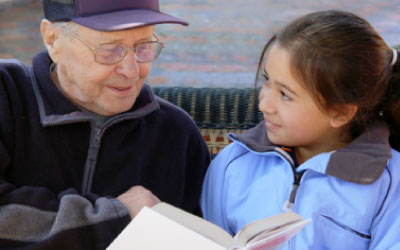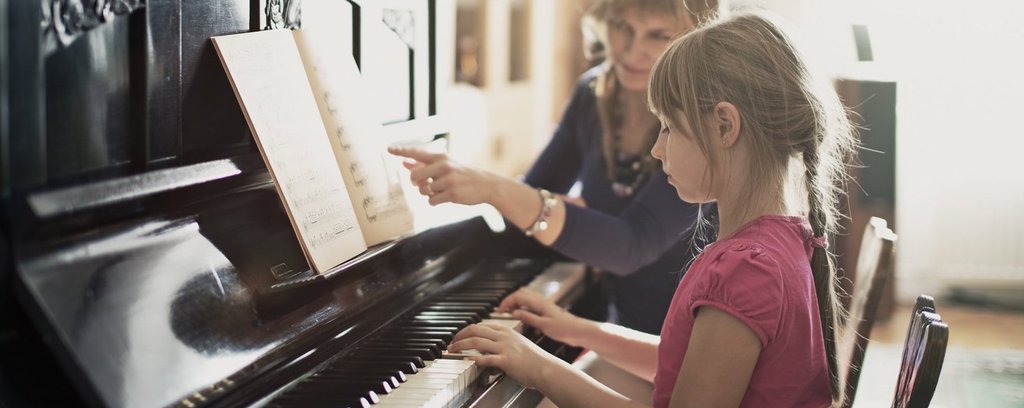“Generation gap” became a familiar term in the 1960s. Today, the gap is widening, especially between our elderly and our youth. Why?
Implications of the Generation Gap
In modern cities, kids hardly interact with seniors beyond their grandparents. Even that’s becoming rare as people frequently relocate for work, settling far from relatives.

Without strong intergenerational relationships, both young and old miss out. Seniors can become socially isolated and lonely. Kids lose the loving care that older adults have the freedom to give. Age groups make divisive assumptions about each other, rather than sharing their unique wisdom and skills with one another .And that loneliness we easily see in the isolated elder is now recognized to be occurring with equal impact among our youth, in spite of or perhaps because of their perpetual tech-connectivity.
Bringing generations together has huge potential for our society. In this blog, we’ll discuss the key advantages—and how intergenerational living communities can effectively facilitate them.
(Related post: Why We Need More Multigenerational Living Communities)
When Wisdom Meets Youthful Energy
Active older adults with close intergenerational connections consistently report less depression, better physical health, and higher degrees of life satisfaction. In contrast, social isolation is associated with increased mortality in older people.
Intergenerational living can prevent social isolation through elder and youth interaction. In a Spanish study, researchers analyzed the effect of an intergenerational program involving university students and elders with mild depression. Throughout the program, the mental state of participating elders significantly improved, while that of non-participants worsened.
Even without scientific proof, it’s obvious that seniors light up when children show up. Youthful energy, honesty, laughter, and joy at little things are contagious.
In return, elders can forge easy relationships with youth. They no longer feel the same pressures that parents do and therefore treat kids with patience and kindness. Magical connections can and do occur.
Children Need Quality Time with Adults
These days, most households with children require two working parents, and finding good childcare is imperative. Grandparents often volunteer, and such contact keeps kids connected to their roots and family history. But if relatives are far-flung, other seniors in the neighbourhood could be excellent grandparent substitutes.
Retirees might provide some of the time and attention that children need—and, they might not cost as much as daycare or professional nannies. Why isn’t this happening more regularly in our modern city neighbourhoods? We say “it takes a village to raise a child”, and we have delegated childhood development to teachers and coaches, which is good; they are the mature role models our youth need. But has labour specialization taken us away from the less structured role of the village elder?
Older adults, with decades of life experience, have a deep capacity to feel compassion towards younger generations. The simple presence of accepting, loving adult “mentors” helps children develop healthy self-esteem, empathy, and social awareness.
Kids can have fun with seniors, sensing their knowledge and hearing unexpected real-life stories. Elders often vividly recall their own youth, so they can relate to young people more than might be expected. Have we simply lost sight of this, becoming resigned over our years to the “generation gap”?
Intergenerational Connections Bring Mutual Learning and Respect
There’s a connection here to the dilemma that’s called “ageism”. In modern Western society, ageist stereotypes are pervasive. Younger people can develop negative attitudes toward seniors as being old-fashioned and set in their ways. Likewise, older people might automatically blame youth for societal problems—or simply find them incomprehensible.
Intergenerational relationships help to erase stereotypes. In the Spanish study mentioned earlier, both the older and younger cohorts reduced their stereotyping of the other during the intergenerational study.
An effective way to cultivate elder-youth bonding is through teaching—and learning from—one another. Kids so often teach their elders text messaging and the use of apps on cell phones—or update them on the latest slang. And similarly, seniors can share their knowledge—perhaps a love of literature, or gardening know-how—with those younger. With decades of life experience, older people have much to offer.

With inter-gen knowledge transfer the generations gain familiarity and mutual respect. For kids especially, teaching an elder can boost confidence and sense of purpose.
The Missing Piece: Intergenerational Living
How can younger and older generations come together? Can the generation gap be bridged?
Imagine a community where young and old live in sociable proximity—in independent units, but in a cohesive neighbourhood. They share indoor and outdoor spaces and lively events. They watch out for one another, share a bit of their lives, and become supportive neighbours. Maybe even friends, or as close as surrogate family.

This type of living arrangement is possible and it’s within reach. Here at Carpe Diem, we’re working hard to bring multigenerational living projects to life. We think that as Canadians, we’re especially capable of diversity. Stay tuned!
Over to you! What is your experience with intergenerational relationships? Do you think they benefit society? Let us know in the comments below.
